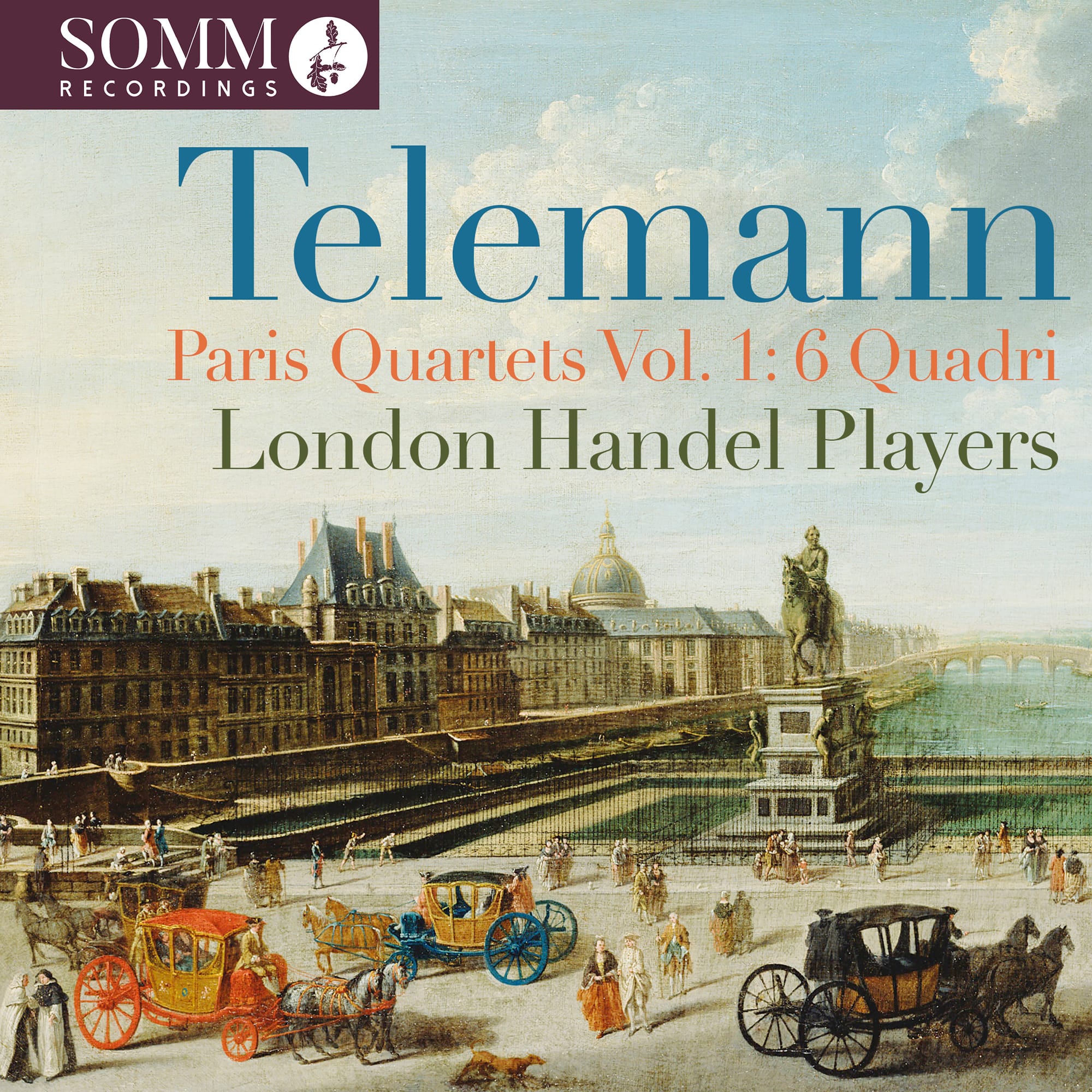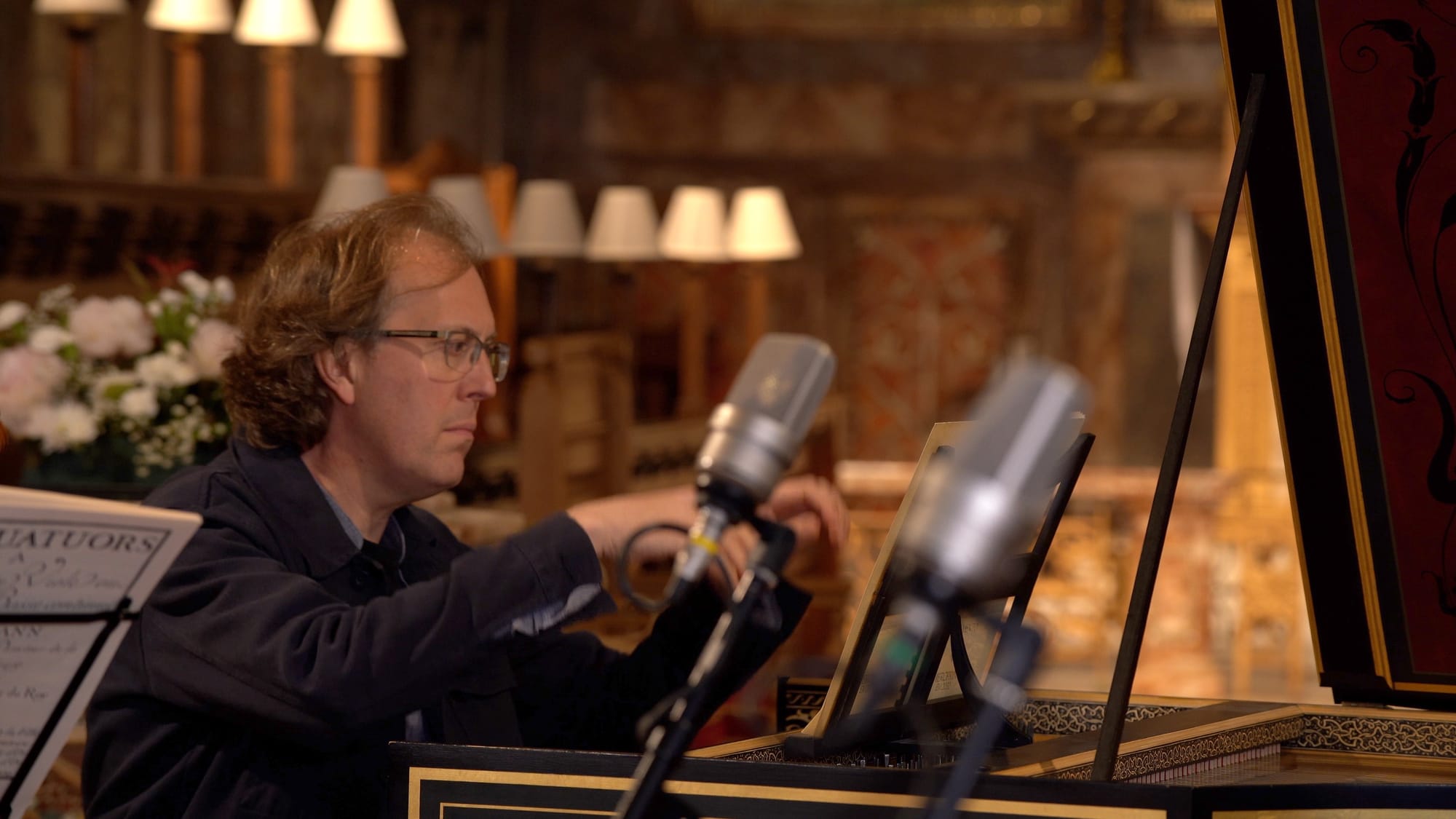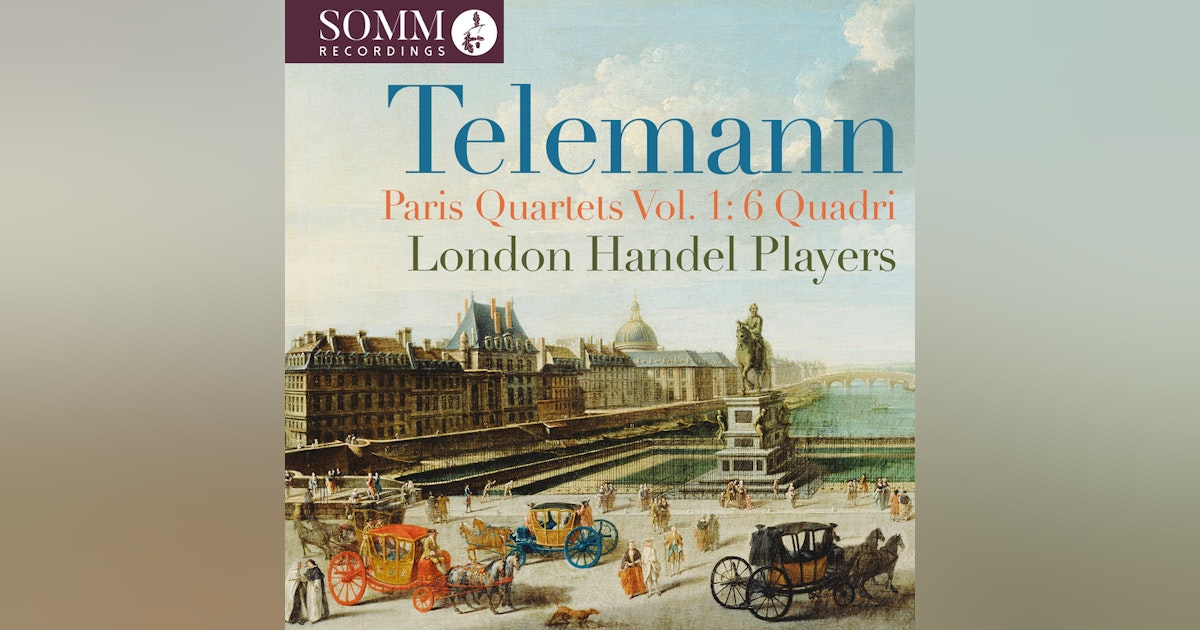Telemann Paris Quartets, Volume 1: Six Quadri from the London Handel Players

My goodness, the quality in Telemann's works is high. Soon, we'll be looking at a disc of early cantatas (along with a work by Heinichen) on cpo, but t's time for chamber music: the first volume of "Paris Quartets" from the London Handel Players, who perform the six Quadri on SOMM, on period instruments:
Fanous for his affiliation with Hamburg, Telemann also held posts at Eisenach and Bayreuth (don't forge there's a Baroque Festival there as well as Wagner!). Telemann self-published his first set of quartets ("Quadri") in Hamburg; Le Clerc republished them in Paris in 1736 (without the composer's permission!). Telemann composed.a second set of quartets on a visit there 1737-8; together, they became the Paris Quartets, thanks to the editors at the Telemann Musikalsche Werke.
Unlike the accepted idea of "quartets," the Quadri include Italian concertos, German Sonatas, and French Baletti (dance suites): making this bracingly interesting listening.
The London Handel Players is a movable feast when it comes to membership, here showcasing the talents of Rachel Brown, flute; Adrian Butterfield, violin; Gavin Kibble, viola da gamba; Sarah McMahon, cello; and Silas Wollston, harpsichord.
They record regularly for SOMM.
I remember one piece from TWV 43 in France, at Ton Koopman's Itinéraire Baroque in the Telemann Year: not one of those here, but TWV 43:G6 (review) in which I found both profundity and joy. I find the same qualities here: the Concerto à 4, TWV 43: G1 has both in abundance:
Listen to the cheek of the Allegro, too with its "rocking" gestures up and down interspersed with a flute (the superb Rachel Brown) whose energy is irrepressible::
So just to say why I didn't say "Concerto in G-Major" there. It's embedded in the catalogue number from the Telemann-Werke -Verzeichnis (TWV). Volume 43, and G1 is the first in G-Majorz Next is the Suuite in E-Minor. There is a Prelude, identifiably minor, but no slow opening here, straight into a "Vitement" (Quickly). So, the German Telemann is very much in French mode, Brown duetting with Butterfield's violin superbly:
There follows a sophisticated Rigaudon (the London Handel Players dig in en masse.to the accents) before he one movement that encapsulates why I love Telemann so much: an Air that is both gallant and deeply touching. The LHP members realise Telemann's use of Affekt so perfectly:
Flute and violin vie in agility in the intriguingly named "Réplque," but it is the Meniet I & II that holds the surprises, as profound in its gentilité as the Air:
The concluding Gigue is just as perfectly crafted:

We had TWV 43:G1; here's WV 43:g1, so a slip to the minor. The opening Andante, minor-key though it might well be, is suffused with the spirit of.(slow) dance:
The chasing of entries in the Allegro that follows is wonderful, a true spirit of chamber music; echoes crop up agin in the Largo, but now far more gentile:
It's not just the imitation in the finale, it's the idea of subject and a contrasting, but simultaneous, countersubject that is so lovely.

... and so to another Concerto (TWV43:D1) with a Germanic Allemande to start, Rachel Brown and her soloist-mate Adrian Butterfield in fine fettle. and what a cheeky, throwaway final cadence we have here!:
The "Affetuoso" is truly lovely. It is the finale that shines, though. I've mentioned the Brown and Butterfield's alliance: here it really comes out to its own. This is chamber music personified, two equally fine musicians at the top of their game:
Next is the Suite à 4, TWV 43: h1 ("H" is "b" in German, remember, and "h" in lower case here indicates minor). Telemann in minor key always seems to have an unlimited imagination. the way he throws a phrase around every single instrument is lovely here, in the Air (Modérement), while the "Réjuissance" that follows strikes me as Telemann's equivalent to Bach's "Badinerie":
The rhythmic shifts, so playful, of the finale, are immediately appealing:
The final Sonata is TWV 43:A1, its first movement marked "Soave" (sweetly), and so it is here! It feels as if any heaviness is totally absent, especially in the Allegro second movement:
Listen to the Andante peel itself into existence, though, and Telemann's suddenly enigmatic, dissonant harmonies. This is the great composer at his finest:
The recording, made at St John the Baptist, Loughton (just up the road from where I write this!) and is simply superb, the acoustic just resonant enough, but with mikes close so there is no blurring.
One tiny typo in the booklet that's a touch unfortunate:"the polish-style Vivace" instead of "Polish". Mind you, there's no cleaner writing than Telemann's ...
The disc is available at Amazon here.


